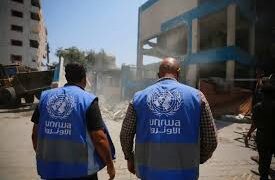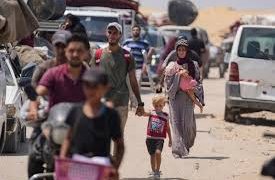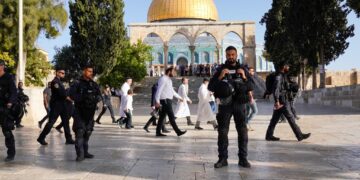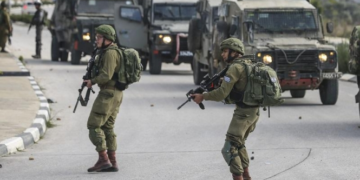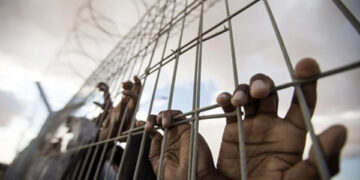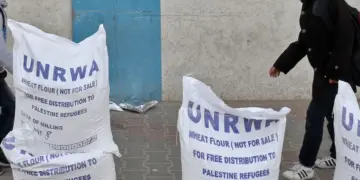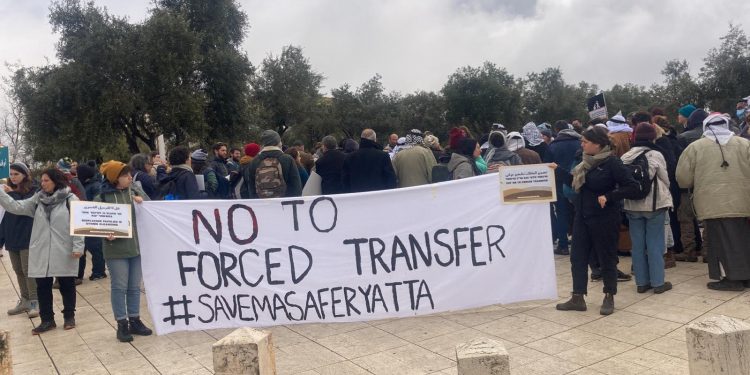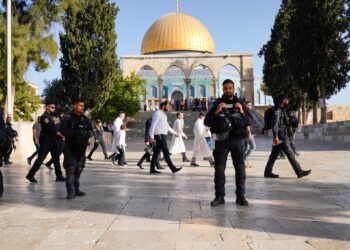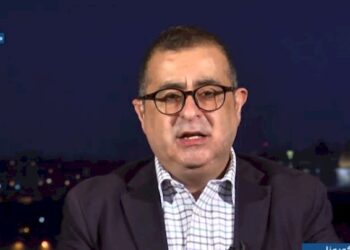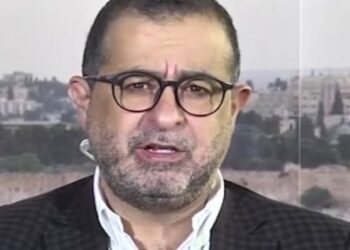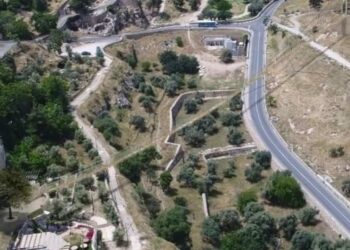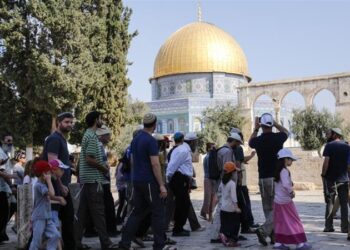Agencies-Gaza post
Palestinians in Masafer Yatta fear a new Nakba after the Israeli High Court ruling
On May 4, 2022, the Israeli High Court denied a requisition submitted by the citizens of 12 Palestinian residential communities in Masafer Yatta, south of the southern West Bank city of Hebron, against the destruction of their districts and their removal from their houses following stating the area as “firing zones 918”.
“I am in pain from we have to endure from the Israeli occupation authorities and the settlers,” said Mohammad Najajrah, 44, who lives in the village of al-Markaz, one of the 12 communities in Masafer Yatta terrorized with destruction and expulsion of its citizens. “We are threatened by the Israeli court of injustice with the forcible transfer. We and our children will be left without shelter. The demolitions and seizure of lands and building settlements are part of an Israeli scheme led by settlers with the support of their government to create a buffer zone in the areas close to their settlements,” he reported.
Najajreh, who works in increasing livestock and supports a family of 16 people, added, “We will never leave our villages and communities that we inherited from our fathers and grandfathers. Arguing that our villages and communities are firing zones that should be empty of people is a fabrication and lie. We will stay in our tents, caves, and houses. We will never leave them no matter what the occupiers and the settlers will do and no matter at what cost.
Abdel Hadi Hantash, a cartographer and an expert on Israeli settlements in the southern West Bank said that the Israeli occupation authorities are trying to complete a so-called firing zone for the military training of its soldiers in Masafer Yatta near the 12 villages threatened with demolition and displacement – Janba, al-Majaz, and al-Fakhit, al-Halawa, al-Markaz, al-Faqra, al-Toba, al-Tabban, Maghayer al-Abeed, Safi al-Fouqa, Safi al-Tahta, and Khallet al-Daba). These villages were built on the lands and properties owned by citizens before the establishment of Israel in Palestine.
In 1996, he said the Israeli occupation authorities issued 16 military orders in one day and in a single decision to seize 256,000 dunums of peoples’ lands in Masafer Yatta and identified it as Firing Zone No. 918. This takeover affected all of these villages and communities and other villages. In addition to that, the occupation authorities displaced 250 families from these villages slated for demolition, claiming that they were located within a shooting and military training area. These families were forcibly evicted from their homes in difficult weather conditions and they became homeless.
At that time, Hantash was working in the Defense of Lands committee. “We temporarily housed some of the displaced families in tents, and others in caves with their relatives. In 1999, we brought a case before the Israeli courts against their displacement and were able in the year 2000 to win a court ruling to return them to their villages and communities from which they were displaced, and they did return them. However, the occupation authorities did not leave them alone and resorted to threats and intimidation by carrying out military exercises between their homes and shooting over the shoulders of their children to intimidate them and force them to leave voluntarily. However, with the support of the Palestinian government, we worked to strengthen their resilience in their villages and communities, and provided them with tents, water tanks, fodder for their livestock, blankets, and other requirements for their daily lives.”
Hantash said that the occupation authorities are now trying once again to displace them by snubbing the previous courts’ ruling due to complaints submitted by a number of settlers and the Regavim right-wing extremist organization that seeks to find so-called legal means to implement the demolition orders issued by the Israeli authorities against Palestinian homes and facilities. Ari Briggs, director of the international department in this organization, is considered one of its most active members. Regavim’s work is concentrated in the Naqab desert and the so-called Area C, which constitutes 60% of the area of the occupied West Bank. This organization has free access to topographic and demographic information in Area C with a license from the Civil Administration, the Israeli military government’s arm in the occupied territories uses topographical information systems, and carries out detailed aerial photography of the Palestinian territories.”
Source: WAFA


